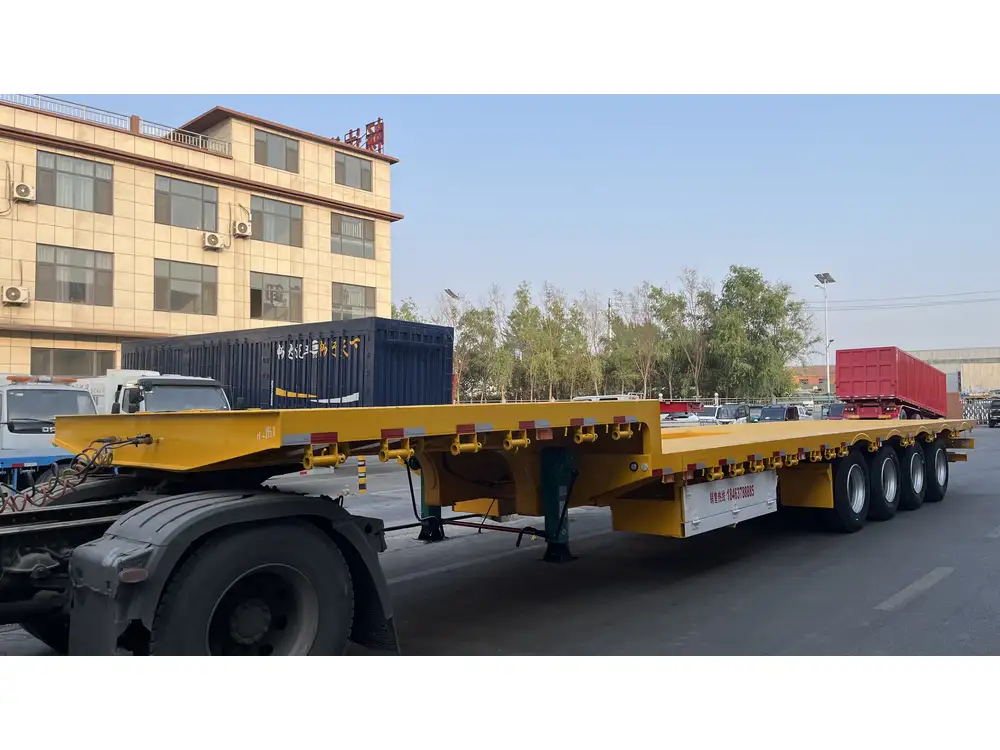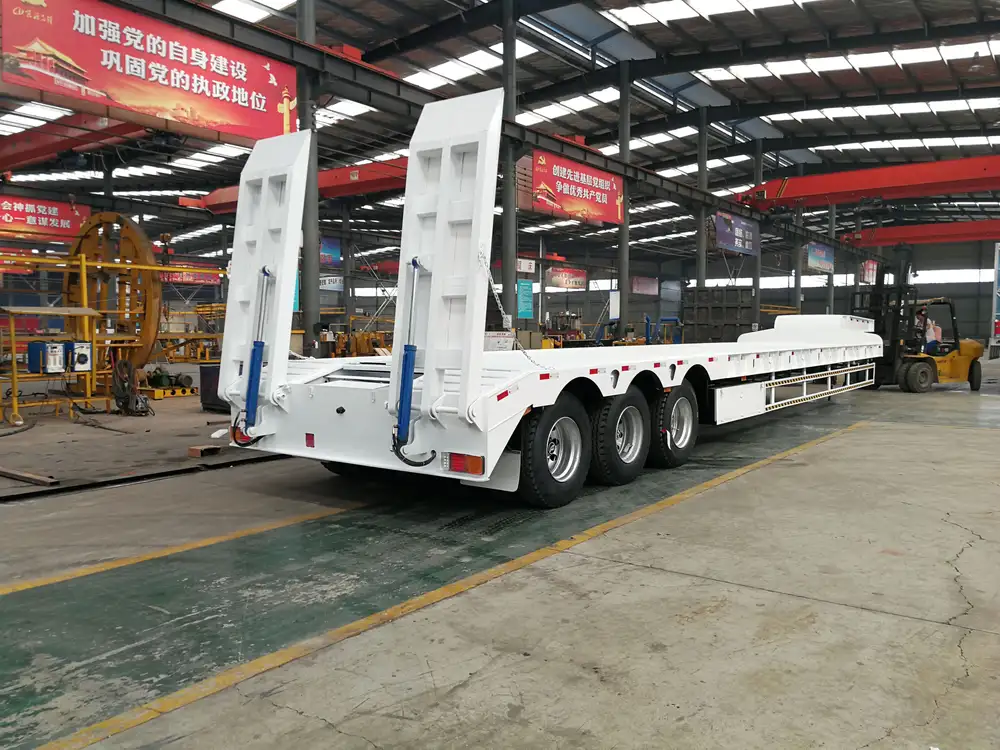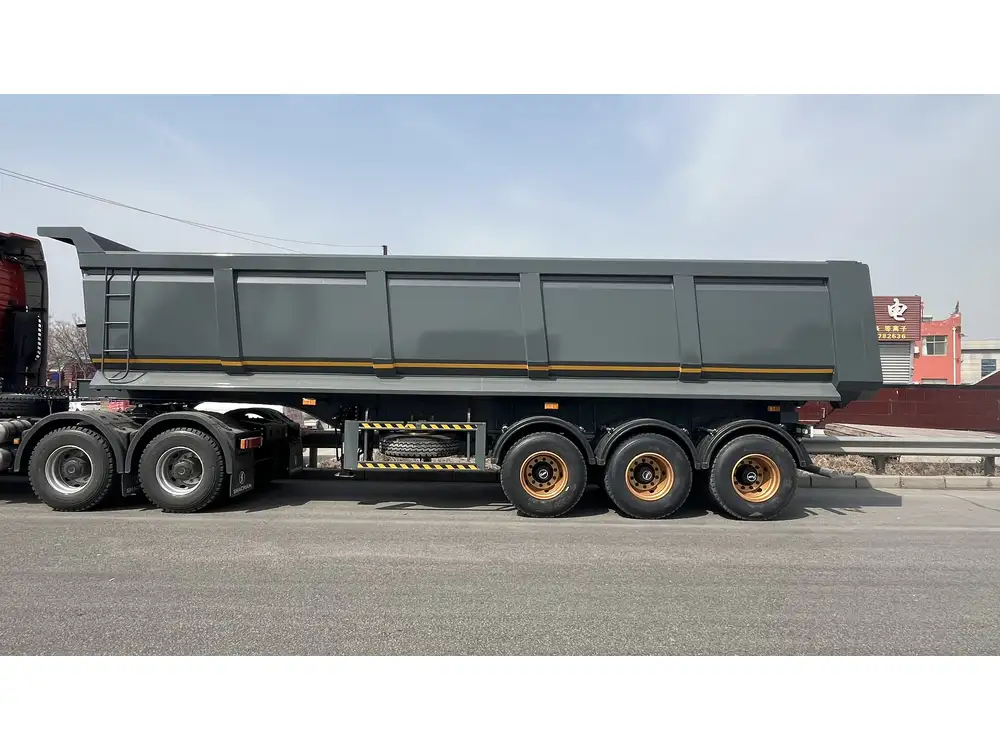When it comes to flatbed car trailers, the choice of steel is pivotal to performance, durability, and safety. The right material determines not only the physical structure of the trailer but also impacts its ability to carry payloads effectively. This comprehensive guide delves into the types of steel utilized in the manufacturing of flatbed car trailers, their properties, advantages, and the questions that arise in the decision-making process for manufacturers and consumers alike.
Types of Steel Used in Flatbed Trailers
The primary steel types employed in flatbed trailer construction include:
| Type of Steel | Description | Typical Applications |
|---|---|---|
| Mild Steel | Composed of iron with a small percentage of carbon. Known for ductility and weldability. | General structural components, frame construction. |
| High-Strength Low-Alloy (HSLA) Steel | Contains low percentages of chromium, copper, niobium, and vanadium, enhancing strength without adding weight. | Reinforced structures, improved payload capacity. |
| Galvanized Steel | Steel coated with zinc to prevent rust and corrosion. Perfect for outdoor exposure. | Trailer bodies and components exposed to harsh environments. |
| Stainless Steel | Corrosion-resistant due to the high chromium content. Offers excellent durability and appearance. | Specialty trailers, environments prone to rust, and aesthetic finishes. |
| Structural Steel | Designed in standard shapes, offering high strength and stability. | Beams, columns, and load-bearing sections of trailers. |
Mild Steel
Mild steel is often the go-to material for many flatbed trailers. Its inherent flexibility allows for easier fabrication and shaping, making it a cost-effective choice. Mild steel typically withstands negative forces and impacts quite effectively, although it may require regular maintenance to prevent corrosion, especially in wetter climates.
Advantages:
- Cost-effective.
- Excellent weldability.
- Adequate tensile strength for lighter loads.
Disadvantages:
- Prone to rust without proper treatment.
- Less durable under heavy-duty conditions.

High-Strength Low-Alloy (HSLA) Steel
HSLA steel offers manufacturers an intriguing option since it strikes a balance between weight and strength. This type of steel is favored for producing trailers designed to carry heavier loads without excessively increasing the overall weight of the trailer itself.
Advantages:
- Reduces overall trailer weight while maintaining strength.
- Ideal for maximizing payload efficiency.
- Improved performance under stress compared to mild steel.
Disadvantages:
- Higher cost compared to mild steel.
- Requires specialized welding techniques.
Galvanized Steel
For operators in areas with harsh weather conditions or those transporting corrosive materials, galvanized steel becomes an essential choice. The zinc coating provides extra protection against rust and corrosion, which significantly extends the life of the trailer.
Advantages:
- Excellent corrosion resistance.
- Reduced maintenance costs over time.
- Longevity in outdoor applications.
Disadvantages:
- Increased weight due to zinc coating.
- More complex manufacturing process.
Stainless Steel
While generally not as common for the frame of flatbed trailers, stainless steel is highly beneficial for specific components that require a high level of resistance to corrosion and a more aesthetic finish.
Advantages:
- Superior corrosion resistance.
- High durability and retains appearance over time.
- Ideal for trailers that are frequently washed and exposed to elements.
Disadvantages:
- Significantly higher cost.
- More challenging to work with than other types of steel.

Structural Steel
Structural steel is engineered to provide significant strength and stability. It is available in standardized shapes, such as beams and channels, which can streamline manufacturing processes for flatbed trailers.
Advantages:
- Extremely durable and stable.
- Facilitates large and complex designs.
- Comparative performance across varying load conditions.
Disadvantages:
- Can be heavier and more expensive.
- Requires advanced welding and fabrication techniques.
Choosing the Right Steel for Your Flatbed Trailer
Factors to Consider
Intended Use: The nature of the loads being transported significantly influences the choice of steel. Heavier loads warrant stronger, lighter steel compositions.
Environmental Conditions: Locations with high humidity or corrosive materials necessitate the use of galvanized or stainless steel to prolong lifespan.
Cost: Budget considerations might drive decisions towards mild steel, but weigh this against potential maintenance costs.
Weight Requirements: For those prioritizing payload efficiency, HSLA steel is an optimal choice. Manufacturers and users should balance strength with weight loss for enhanced performance.
Fabrication and Maintenance: Different types of steel require varying degrees of skill in welding and maintenance. It is important to assess the available resources for upkeep and repairs.

Essential Questions to Ask
- How does the selected type of steel enhance payload capacity?
- What are the long-term maintenance needs for each steel type?
- Are there any weight restrictions based on the chosen steel?
- What implications do loading and unloading processes have on the selected steel?
Durability and Strength Comparisons
A direct comparison of different steel types reveals their characteristics in relation to durability, weight, and maintenance. Here’s a comparative analysis:
| Property | Mild Steel | HSLA Steel | Galvanized Steel | Stainless Steel |
|---|---|---|---|---|
| Weight | Medium | Light | Medium | Heavy |
| Corrosion Resistance | Low | Medium | High | Very High |
| Tensile Strength | Moderate | High | Moderate | High |
| Weldability | Excellent | Good | Fair | Moderate |
| Cost | Low | Medium-High | Medium | High |
The Manufacturing Process of Flatbed Trailers
Understanding how the type of steel impacts the manufacturing process of flatbed trailers is crucial for making informed choices. The process generally involves the following steps:
Material Procurement: Steel is chosen based on the trailer’s specifications, with considerations for welding equipment, challenges posed by each steel type, and the intended application.
Fabrication: Components are cut, formed, and welded together. The choice of steel influences the machinery and techniques used in this phase. HSLA steel requires specific welding methodologies owing to its complex properties, while mild steel may permit less specialized approaches.
Finishing: Galvanization or other protective coatings are applied if necessary, enhancing durability against environmental exposure.
Quality Assurance: Rigorous testing ensures that the trailer meets safety and performance standards, considering the characteristics of the material used.
Delivery: Once assembled, trailers are transported to clients or dealers for sale.

Increasing Trailer Longevity
To maximize the life of flatbed trailers, regular maintenance—appropriate for the selected steel type—is essential. Key practices include:
- Regular Inspections: Periodic checks for rust or wear, especially in steel types prone to corrosion.
- Proper Cleaning: Removing debris or corrosive materials from the trailer’s surface.
- Routine Lubrication of Moving Parts: Essential for ensuring functionality and preventing galling against steel.
Conclusion
Selecting the appropriate steel for flatbed car trailers is a decision that encompasses various factors, including weight, intended use, cost, and environmental exposure. Each type of steel has its advantages and disadvantages that can significantly affect the trailer’s performance, durability, and safety.
By analyzing these aspects and employing structured decision-making, manufacturers and users can ensure they attain the ideal balance in their trailer design, maximizing both utility and lifespan. Enhanced knowledge facilitates better investments, encouraging stakeholders to prioritize not just procurement but long-term functionality and resilience in their operations.
In the highly competitive market of flatbed trailers, understanding the intricate relationships between steel types and performance can provide a significant edge, ensuring user satisfaction and optimal load management.



